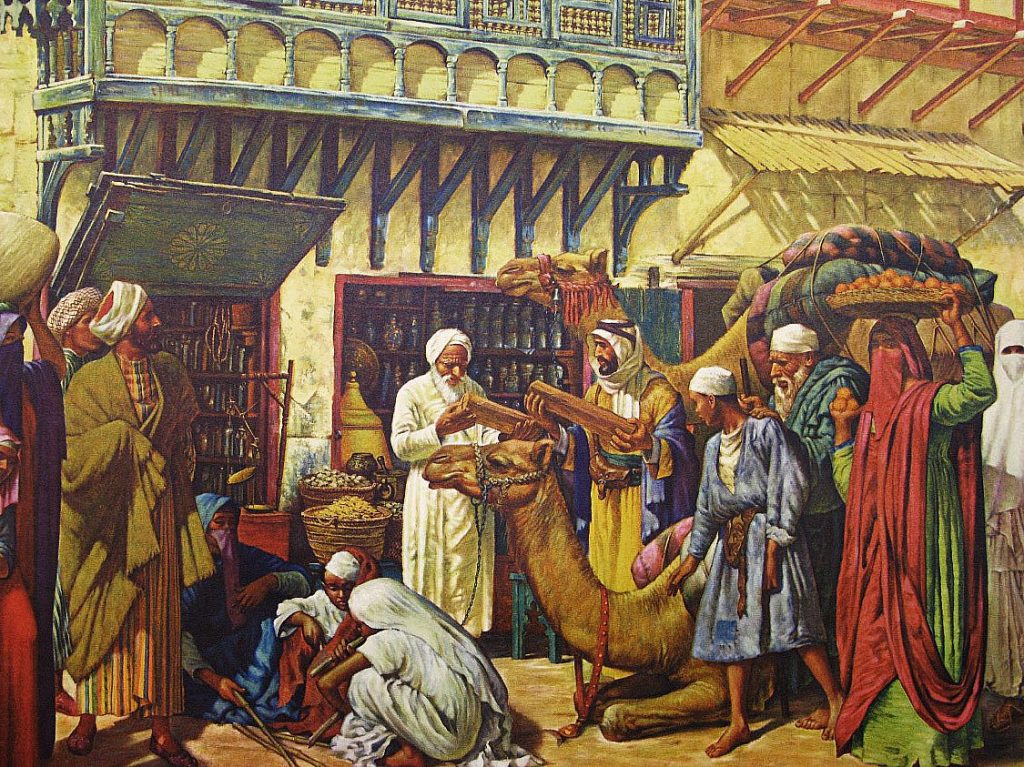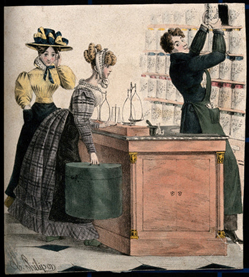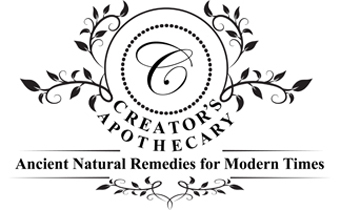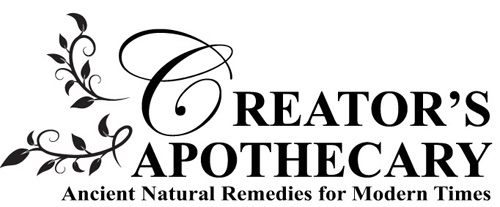You Might Ask, “What is an Apothecary?”
Merriam-Webster’s Dictionary defines an apothecary as “one who prepares and sells drugs or compounds for medicinal purposes.” The word apothecary is derived from the ancient Greek language and is basically what we consider to be a drugstore or pharmacy today, e.g. Walgreens or CVS. Unlike modern drug stores, apothecaries specialized in herbal sciences and chemistry. Today drug stores and pharmacies merely dispense the medical products developed by pharmaceutical companies.
The word apothecary refers to both the business itself (the apothecary) and the person trained to make medicines (Apothecary). The word has a duel meaning. The same word can mean the pharmacy (or drug store) AND the person who does the formulating and blending. An Apothecary is a term of professional distinction, like a doctor or dentist. An Apothecary is a person. The location of an apothecary’s business is also called the Apothecary.
The Apothecary Experience

It was a fascinating time when druggists meticulously mixed herbs and minerals with the intent of curing the ailments of their patrons. An apothecary performs the distilling, mixing, and dosing of medications and liquors, in-house. You would receive a personalized consultation visit with the Apothecary.
When you entered an Apothecary, you would see handblown apothecary jars labeled in gold and filled with ancient chemicals, crude drugs, and herbs such as foxglove, belladonna, eyebright, feverfew, and opium poppy from which the pharmacist compounded his preparations. Mortars and pestles of diverse sizes, shapes, and materials on the lower shelves. Apothecaries were not mystical, magical beings or peddlers (as often portrayed in magic movies) of expensive, and often useless oils; an Apothecary was a highly valued and esteemed medical professional.
Ancient History’s Influence of Apothecary and Medicine
Babylon and Egypt – As far back as 2600 B.C. ancient Babylonians recorded physical health symptoms and prescribed treatment of medical patients. The oldest and most complete archive of ancient apothecary medicine, 800+ recipes and treatments, is found in the ancient Egyptian Papyrus Ebers written about 1500 B.C.

China – The Shen-nung pen ts’ao ching is the foundation of eastern apothecary medicine and a basis for modern naturopathic and holistic medicine. Containing 360+ treatments for ailments and diseases the Shen-nung pen ts’ao ching was written by the year 200 CE by ancient Chinese.The book classifies herbs and organic drugs into 3 categories, low herbs, middle herbs and upper herbs. The upper herbs (120 natural substances) were determined to be generally regarded as safe (GRAS) for humans and included plants and herbs such as ginseng, orange, cinnamon, and cannabis. Though GRAS, in excess, these may also be toxic including ginger, poppy, peony, and cucumber. Lower herbs (125 natural substances) were determined to be profoundly dangerous when improperly consumed and included plants, and fruits such as the peach and rhubarb.
Islam – During the Middle Ages, tremendous advances were made in medicine; pharmacies, hospitals, and apothecaries existed in Baghdad over 500 years before the first apothecaries were established in England. From 700 CE through the 12th century, Islam fostered major medical innovations and breakthroughs which spread throughout the Europe during the 12th century Renaissance; medical knowledge that also including the teachings of Hippocrates (Greek physician, c. 460–377 bc).
Italy – Between the 14th to 17th century, the Italian Renaissance, Islamic apothecary practices were embraced by Catholic Nuns, known for their apothecary medicine contributions in Italian convents. The Italian Renaissance played a significant role in the expansion of apothecaries to the western world.
England – By the early 1600’s, England established a country-wide Society of Apothecaries. Individuals could become trained as an Apothecary-surgeon, herbalist, druggist, or physician. Apothecaries were originally a part of the Grocers’ Company. King James I in 1617, publicly recognized Apothecaries, as a result, they were separated from the Grocer’s Company and gained huge popularity and were used by many citizens. By the end of the Renaissance, apothecaries of many types were common throughout western Europe and England.
Apothecaries vs. Chemists
Apothecaries were at their most popular throughout the 1700s but by the turn of the century, they were starting to be outnumbered by Victorian chemists. For centuries before the Victorian period, women would typically make their own medicines at home using simple herbal remedies. Wealthier households would even have a “still room” where home remedies could be distilled in greater quantities.

“[…] a woman could use some cosmetic lotions that she herself thought more medicinal than aesthetic. Freckles were an unwanted discoloration of the skin in many people’s minds; the archetype of a beautiful woman was one with clear, pale skin, and freckles were seen as blemishes, no better than spots and pimples. Most apothecaries and pharmacists mixed their own formulas to sell at the beginning of the century, but, by the end of the period, these locally made products were joined by a host of national brands.” —excerpted from How to Be a Victorian by Ruth Goodman
Well established as a profession by the seventeenth century, the apothecaries were chemists, mixing and selling their own medicines and could be found co-mingled with the grocery market business. The Apothecaries of yesteryear sold many things in addition to medicines, herbal medicines, tinctures, elixirs, spices and herbs. You would likely find tobacco, chemical products like dyes, bug and insect repellents and extermination products alongside everyday cleaning supplies.
By the early 1800’s, chemists became the primary source of medical retail.
During the Victorian era (1837 – 1901), it became more commonplace to purchase one’s medicines from the local apothecary or pharmacist who stocked compounds and tonics for a variety of ailments.
Until the 1930s, a doctor’s prescription was not required for any drugs. Patients often skipped the doctor and described symptoms directly to the apothecary, who determined treatment.
Modern Pharmacy: Lost Personal Contact
With the rise of electricity, machinery, industrialization and the modernization of medicine, the Apothecary of yesteryear was slowly phased out. What the medical industry has gained in efficiency, it has lost in the personal patient-contact offered by an apothecary.
Grace to you and peace from God our Father and the Lord Jesus Christ. Philippians 1:2
Til next time,

https://creatorsapothecary.com



